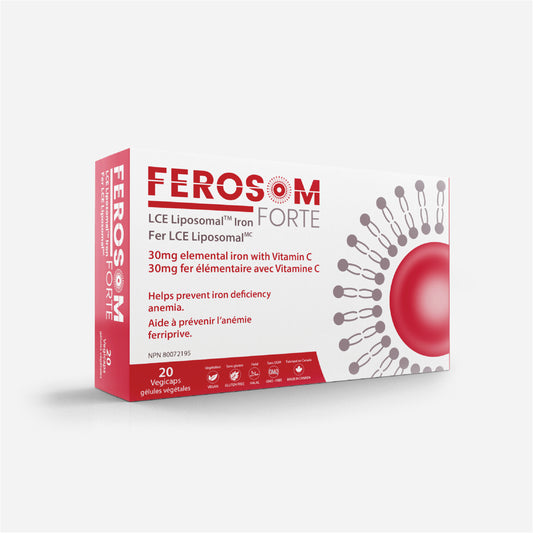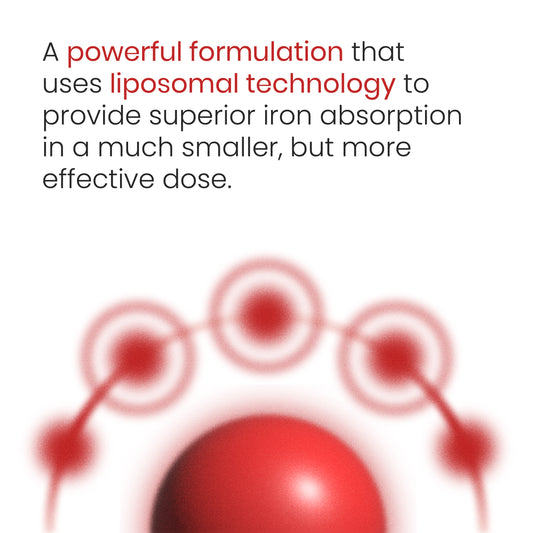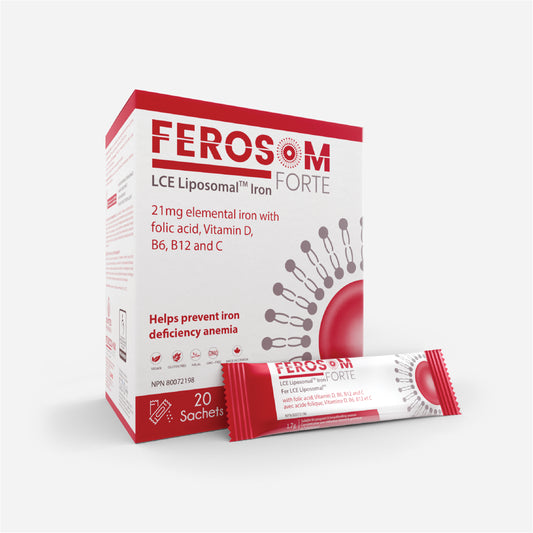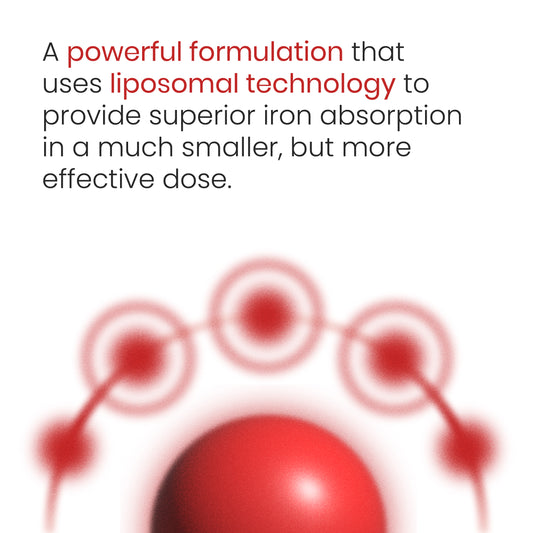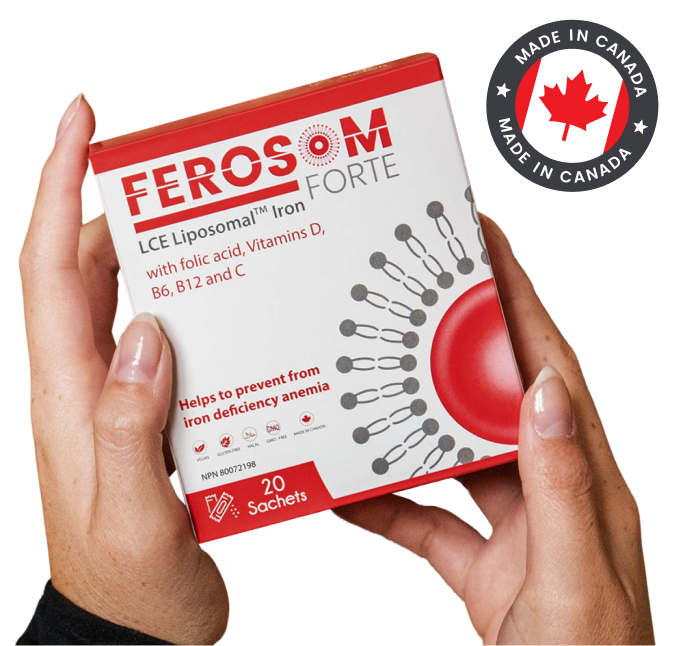

Summer is coming on fast, friends. That means a little less time binging Netflix and a lot more time in the sun (finally).
But for those of us with anemia, the warmer weather can actually be a burden. That’s why it’s so important to keep our iron balanced all summer long with a proper diet and effective supplements.
Wondering why your anemia gets hit harder in the heat? We’re breaking down everything you need to know about iron deficiencies in the summer, plus some tasty iron-rich recipes to keep your iron in check.
Why can anemia get worse in the summer months?
As much as we all love summer, it’s not exactly prime time for anemia. Since people with anemia have a lack of red blood cells to carry oxygen to their tissues, they also experience poor blood circulation. This makes it harder for their body to naturally regulate its own temperature.
That’s why anemia and low iron can cause heat exhaustion, heatstroke, and heat intolerance. Symptoms can include heavy sweating, a rapid pulse, weakness and fatigue, and an overall feeling of being hot — even when other people in the same temperature are feeling easy-breezy.
The result? Most people with anemia end up feeling sick in the summer (not ideal when you’re trying to look cute on the beach).
What are the four main types of anemia?
Yep, there’s more than one. Here are the four main types of anemia and what you need to consider for each one as we head into summer.
- Iron-Deficiency Anemia
This is the most common form of anemia. Iron deficiency occurs when your body simply can’t keep up with its need for iron. How can you treat it? Supplements for anemia and dietary changes are key (but more on that later).
- Pernicious Anemia
It sounds fancy, but it’s definitely not fun. Pernicious anemia occurs when your body can’t absorb enough Vitamin B12 from food. Some people have conditions that prevent them from absorbing this necessary vitamin, while others simply don’t get enough B12 in their diets.
Looking to add extra B12 to your meals? Think about eating more meat, fish, eggs, dairy products, bread, and cereals.
- Aplastic Anemia
This is where things get a bit more serious. When you have aplastic anemia, you have fewer blood cells in general — not just red blood cells. You’re most at risk for developing this type of anemia if you’re undergoing radiation or chemotherapy or if you have a condition that damages your blood marrow.
So, how can you treat aplastic anemia? Blood transfusions, marrow stem cell transplants, and certain lifestyle changes are just a few of the potential options. But unfortunately, simple changes to your diet won’t do the trick.
- Hemolytic Anemia
If you have hemolytic anemia, your red blood cells are destroyed faster than they can be made. This is typically caused by inherited blood or autoimmune disorders.
Just like aplastic anemia, this type of anemia needs a little more love than iron-rich foods can provide. Blood transfusions, surgery, and other procedures are needed to make sure your red blood cells stay intact.
What’s the difference between heme iron and non-heme iron?
Anemia is a year-round struggle, no matter which type you’re prone to. But with the right type of iron, you can steer clear of scary symptoms and take control of your iron deficiency — especially as the weather heats up.
There are two types of iron that can help you battle anemia: heme and non-heme. What’s the difference? Most notably, heme iron comes from animal sources while non-heme iron is vegetarian. But there’s also a slight difference when it comes to their chemical structure.
Heme iron sources are more bioavailable, which means they absorb better in the body. Non-heme iron, on the other hand, isn’t as bioavailable. If you’re vegetarian, that means the type of iron you’re digesting might not be as easily absorbed.
So, what can you do about it? Simple: pair your non-heme iron with Vitamin C. Iron with vitamin c acts as an iron enhancer, making it more bioavailable and increasing its absorption rate in the process.
Ferosom Forte’s non-heme iron supplement, for example, is infused with Vitamin C and has a proprietary LCE coating that protects it from being broken down by stomach acids. The result? It absorbs as well as certain doses of IV iron. Plus, it protects you from nasty gastro-intestinal side effects caused by most iron supplements.
And since Ferosom’s capsules and sachets are microencapsulated in liposomal form, they don’t have to be converted or supplemented by other foods for your body to absorb them. We call that a win-win-win.
What are the most iron-rich foods?
Before we get to some tasty summer recipes, let’s look at the ingredients that will be your iron deficiency’s new BFF.
Iron-rich foods include red meat, pork, poultry, seafood, beans, dark green leafy vegetables (like spinach and kale), dried fruits (like raisins and apricots), peas, and iron-fortified cereals, bread, and pasta. When in doubt, check the label to see if it’s iron-fortified!
Looking for iron-rich foods that also contain Vitamin C? Add broccoli, grapefruit, oranges, kiwi, melons, peppers, strawberries, tangerines, and tomatoes to your grocery list.
Recipes to boost your iron intake all summer long
Master Chef, here you come. Providing your body with the iron it needs can be fun, satisfying, and — most of all — delicious. Here are a few of our favourite iron-rich summer recipes!
Orange Green Smoothie
Our first iron-rich recipe is a refreshing breakfast or mid-day snack that can keep you cool this summer. Plus, it’s super high in Vitamin C (for optimal iron absorption, of course).
Ingredients:
- 2 cups fresh spinach
- ½ ripe banana (previously frozen if possible)
- 1 tangerine or small navel orange
- ½ cup freshly squeezed orange juice
- ¼ cup plain yogurt (optional)
- 1 tbsp chia seeds
- 3 ice cubes
- ½ Medjool date (optional)
- 1 Ferosom sachet (for an extra boost of iron)
Instructions:
- Simply blend and enjoy!
Crispy Baked Beef and Black Bean Tacos
Taco time! This recipe is high in iron and perfect for a backyard dinner with friends and family.
Ingredients:
Taco Seasoning
- 1 Tbsp chilli powder
- 1 tsp smoked paprika
- 1 tsp ground cumin
- 1/2 tsp dried oregano
- 1/4 tsp cayenne pepper
- 1/2 tsp salt
- Freshly cracked black pepper
Tacos
- 1 Tbsp cooking oil
- 1 yellow onion, diced
- 2 cloves garlic, minced
- 1/2 lb. lean ground beef
- 1 15oz. can black beans
- 1 box hard taco shells
- 1 cup shredded cheddar
Optional toppings
- 1 tomato
- 1 jalapeño
- 1 handful fresh cilantro
- 1/4 cup sour cream
Instructions:
- In a small bowl, combine the ingredients for the taco seasoning. Preheat oven to 400ºF.
- Add the onion, garlic, and cooking oil to a large skillet and sauté over medium heat until the onion is soft and translucent. Add the ground beef and taco seasoning and continue to sauté until the beef is cooked through.
- Arrange the taco shells in a casserole dish so they are all standing upright.
- Drain the can of black beans well, but do not rinse them. A little sauciness helps keep the beef mixture moist. Stir the beans into the seasoned beef and allow them to heat through.
- Fill the tacos with the beef and bean mixture. Sprinkle the shredded cheese over top. Bake the tacos in the preheated oven for 7-10 minutes, or until the cheese is melted and the taco shells are golden brown on the edges.
- Sprinkle diced tomato, jalapeño, and cilantro over the tacos, and add a dollop of sour cream just before serving.
Warm Black Rice, Edamame & Prawn Salad
Packed with iron and nutritious to boot, this unique summer salad is gluten-free and seriously tasty.
Ingredients:
Salad
- Black rice 100g
- Frozen edamame 75g
- Frozen peas 75g
- Spring onions 4, chopped
- Cucumber ¼, diced
- Cooked peeled prawns 200g, halved lengthways
- Chopped coriander
Dressing
- sesame oil 2 tsp
- rice vinegar 3 tbsp
- mirin 2 tbsp
- ginger a walnut-sized piece, finely grated
- red chilli 1, finely chopped
Instructions:
- Cook the rice following pack instructions, then drain. Tip into a bowl, add the dressing ingredients, season, and toss.
- Blanch the edamame and peas for a minute in boiling water, then drain.
- Add the edamame, peas, spring onions, cucumber and prawns to the rice. Toss, then add the coriander and toss again before serving.
Summer’s got nothing on your iron intake
You deserve to enjoy every minute of summer without anemia getting in the way. By incorporating these ingredients and recipes into your weekly diet — and pairing them with a powerful iron supplement like Ferosom Forte — you can stay cool, healthy, and ironed up.

